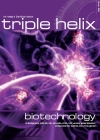Author Sabina Dosani was staffing a BMA stand at a careers fair when she was overwhelmed by enquiries from International Medical Graduates (IMGs). She responded by co-authoring this book which is crammed with succinct information for both recently arrived graduates and doctors contemplating a move to the UK. The expected information re IELTS and PLAB 1&2 is full and in the case of the IELTS language test most informative and well researched. The authors follow the route of the IMG from the stage when he/she is contemplating moving to UK through to arrival and settling in and exploring the openings in the NHS, including negotiating PLAB and job searching. Throughout the writing is marked by both empathy and sensitivity. Some paragraphs are an excellent example of conveying a great deal with few words, eg. the passage on clinical governance.
What makes this book live are the comments from overseas doctors at many different stages, feedback and advice from Dr Yong Lok Ong (overseas doctors Dean, London Deanery) and Professor Michael Carmi (North London GP, whose surname is incorrectly spelt throughout the book) . Additionally there are comments from PLAB examiners, IELTS assessors and the examiners from the Royal Colleges. It is this leavening of the loaf with anecdotes, advice and wisdom that gives this book a special appeal. The retrospective view of the NHS, annotating the major changes since 1948, is a superb summary and a reminder of the constant change that professionals within the NHS have grown to cope with.
As a GP I would have preferred a longer chapter about general practice and a greater exposition of the new contract, with emphasis on the necessity of being computer literate. However the first experience of the NHS that these doctors will encounter is in the hospital. Therefore advice re clinical attachments and the role of the SHO within the district hospital setting is essential. Judicious use of flow charts and diagrams aids explanation of the acute trust organisation. There is excellent advice on teamwork and inter-professional relationships. There is advice on how to cope with homesickness, exam failure and personal health issues, including stress. There are lists of helping agencies, both professional and illness orientated. The proper role of the GP in personal health care is clarified and applied. A most informative chapter on the British way of life is called living in Britain. This is a mine of information as to the idiosyncrasies of the infra structure which those born in the UK take for granted.
Finally the book provides four pages of acronyms commonly used in UK medicine from A&E to WBC. This is most useful and not surprisingly there were some I had not encountered or fully understood. A book worth reading and recommending to our colleagues from overseas, it is also a useful exercise for UK graduates to see our profession as overseas colleagues experience it. This is a well produced and planned book of advice and information.
Reviewer: Geoffrey Norris































